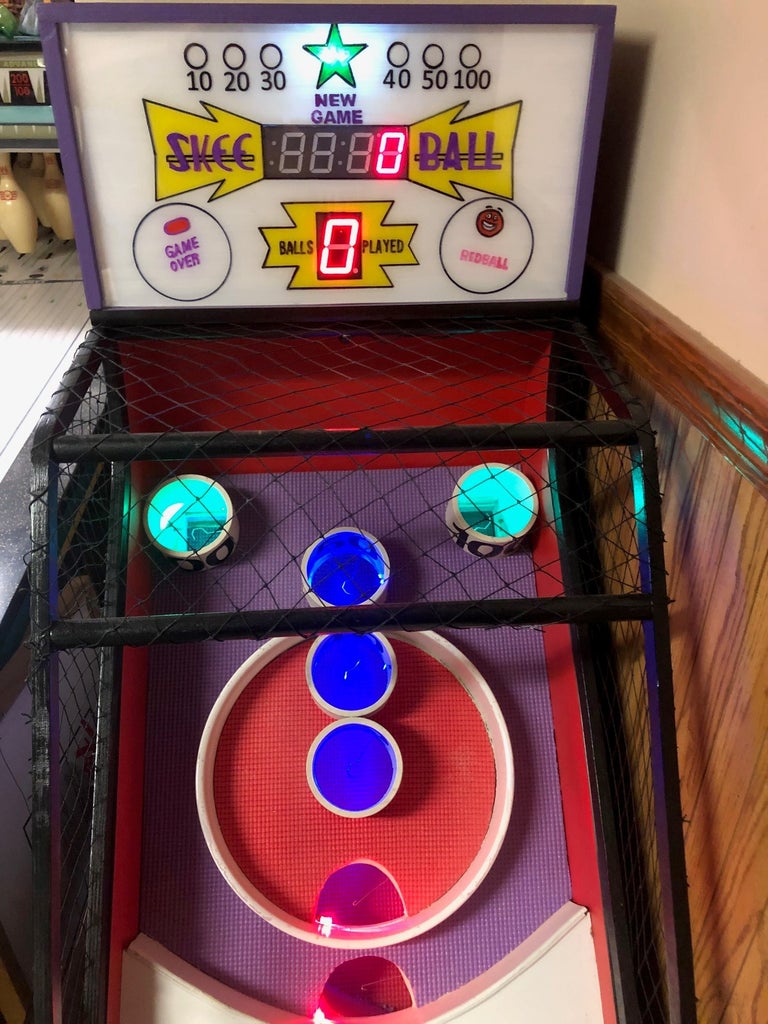Get ready for some cool matches against the computer in this awesome Curveball online game. Your task is to get the ball into your opponent’s goal. Give the ball a spin effect by moving the paddle during the impact in order to trick your artificially intelligent opponent. A pitch with a downward spin that causes the ball to drop and veer as it approaches home plate, away from the side from which it was thrown: He started perfecting his curveball during his junior year in high school.
- Curve Ball&& Try The Games Online
- Curve Ball&& Try The Games To Play
- Curve Ball&& Try The Games Play
- Curve Ball&& Try The Games Free
- In baseball and softball, the curveball is a type of pitch thrown with a characteristic grip and hand movement that imparts forward spin to the ball, causing it to dive as it approaches the plate. Varieties of curveball include the 12–6 curveball and the knuckle curve. Its close relatives are the slider and the slurve.
- Kickerball - Curve and Swerve Soccer Ball/Football Toy - Kick Like The Pros, Great Gift for Boys and Girls - Perfect for Outdoor & Indoor Match or Game, Bring The World Cup to Your Backyard.
curve ball

Curve Ball&& Try The Games Online
Want to thank TFD for its existence? Tell a friend about us, add a link to this page, or visit the webmaster's page for free fun content.
Link to this page:

A curveball (aka curve, hook, yakker, Uncle Charlie and The Hammer) is a breaking ball with less speed and more movement than a slider. A curve is thrown with the forearm rotated 90° inward, and often, though not always, with a deliberate snap of the wrist as the ball is released.
Curve Ball&& Try The Games To Play
For decades, it was debated among fans whether a curveball really did curve. Fans would sometimes set up a series of posts, and get curveball pitchers to throw balls past the posts to see the amount of curve, if any. Applied physicists finally settled the question that yes, it does curve.
Candy Cummings is credited as the first pitcher to throw a curveball, although Fred Goldsmith was the first pitcher to actually do a public demonstration of the curveball, in 1870.
Curve Ball&& Try The Games Play
A curveball is always slower than a fastball, but the degree of difference varies widely. Some pitchers throw a hard curve that is almost as fast as a slider, while others throw a slow curve that serves effectively as a change of pace. The curve can be thrown from any arm angle, with the ball's breaking in the direction of the pitcher's arm movement.
An overhand curve, drop curve, or 12 to 6 curve is a ball thrown with an arm motion directly over the pitcher's shoulder. Because its motion is straight down, the overhand curve is equally effective against left and right handed batters.
Curve Ball&& Try The Games Free
A 3/4 curve, roundhouse curve, or 11 to 5 curve is thrown from a three-quarter overhand position. It drops and moves slightly away from a batter with the same handedness as the pitcher or toward an opposite handed batter.
A sidearm curve or outcurve is thrown from a straight sidearm angle and breaks directly away from a same handed batter or toward an opposite handed batter. A well thrown sidearm curve is terrifying to batters with the same handedness as the pitcher; it can look as though it's going to hit the batter and then break enough that it crosses the outside of the plate. The sidearm curve is a classic LOOGY pitch, since it's much more effective against same handed hitting.
An underhand curve is thrown underhanded as the name implies. It doesn't break straight up because the spin on the ball isn't enough to overcome gravity, but it does drop less than expected.
'Well, this year I'm told the team did well because one pitcher had a fine curve ball. I understand that a curve ball is thrown with a deliberate attempt to deceive. Surely this is not an ability we should want to foster at Harvard' - traditionally attributed to Harvard University president Charles Eliot
As the above quote, popularized by Ken Burns in his documentary Baseball, shows, the curve ball was controversial when it first appeared on the scene. The quote is genuine in that it does accurately reflect the views of some persons at the time, but its attribution is incorrect. It was in fact Humanities professor Charles Eliot Norton, a cousin of Charles Eliot, who pronounced it, and he was an outsider to the game, his views being one of a reactionary remembering the days of his youth four decades earlier when pitchers were still lobbing balls towards the batter to let him hit it as hard as possible.

Further Reading[edit]
- David Adler et al.: 'These are the nastiest curveballs in baseball', mlb.com, March 30, 2020. [1]
- Dave Baldwin, Terry Bahill and Alan Nathan: 'Nickel and Dime Pitches', in The Baseball Research Journal, Society for American Baseball Research, Cleveland, OH, # 35 (2007), pp. 25-29.
- Richard Hershberger: 'With a Deliberate Attempt to Deceive': Correcting a Quotation Misattributed to Charles Eliot, President of Harvard', Baseball Research Journal, SABR, Vol. 46, Nr. 1 (Spring 2017), pp. 65-69.
